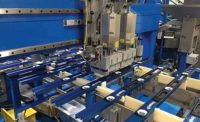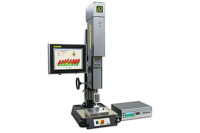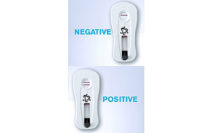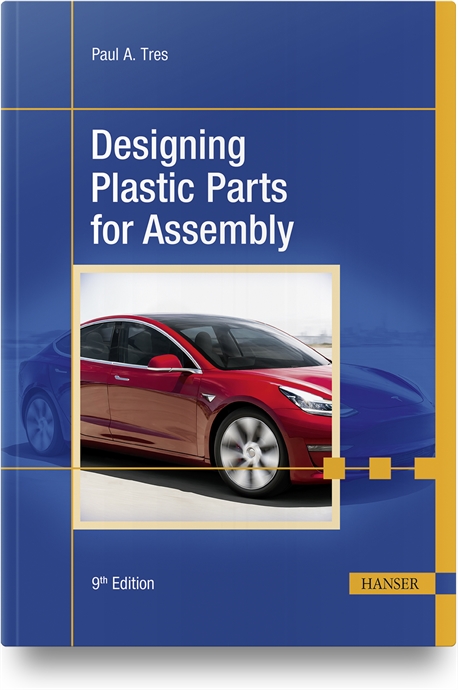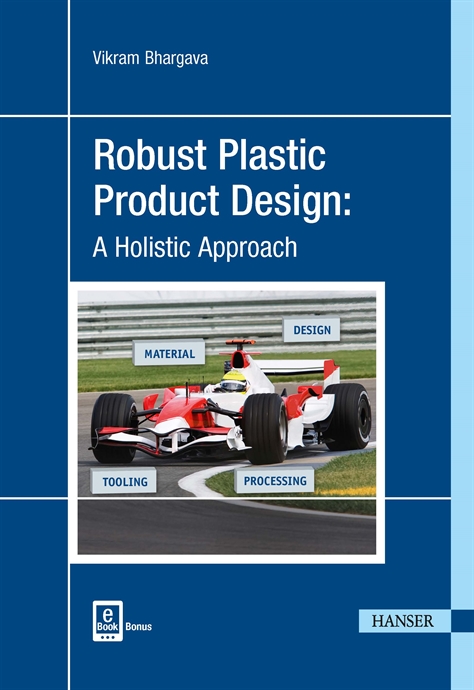In 1984, Schweitzer Engineering Laboratories Inc. (SEL) developed the world’s first digital protective relay. This product helps utilities minimize blackouts and electrical system damage. Since then, the company has invented, designed and built an extensive range of protection, monitoring, control, communications and metering products that cost-effectively improve the reliability of power grids and systems around the world.
Among SEL’s most popular products are fault indicators used on transformers, switchgear, sectionalizing cabinets, junction boxes and splices. A few years ago, the company faced a challenge when welding a clear lens display screen to the polycarbonate (Makrolon 2607) body of one of its indicators.
Because this indicator is used in harsh, submersed and corrosive environments, its housing requires a hermitic seal. This seal is created through ultrasonic welding and then tested to make sure it withstands a temperature from -40 to 65 C. Unfortunately, the pneumatic welding process SEL was using produced non-hermetic seals.
This led the company to conduct a series of welding experiments over a three-year period, according to Rick Lewis, manufacturing engineering supervisor at Schweitzer. The results always indicated the welding process produced high collapsing speeds and very short weld times. Eventually, SEL engineers decided to redesign the plastic injection molds so the housings had a flatter welding surface—and to have ultrasonic welding supplier Dukane Corp. test the parts at an applications lab in St. Charles, IL.
There, the parts were welded with a 20-kilohertz-frequency iQ Series servo-controlled welder. The tests showed that the part was acting like a spring because of a hollow area under the weld zone, and that it was collapsing faster than the horn movement. This resulted in inconsistent and leaking welds. To overcome these problems, Dukane specialists decided to vary weld speeds.
“Although old pneumatic systems are capable of varying the force during the weld, the rate of change is restricted due to the time required to move air in or out of the air cylinder,” explains Ken Holt, senior application engineer at Dukane. “Whereas, the servo system is capable of accelerations of 50 inches per second squared, which is equivalent to changing speed by 1 inch per second in 0.02 second.”
After numerous tests, Dukane specialists determined the optimum varying weld velocity speed setting to be from 0.02 to 0.09 inch per second. Besides producing leak-proof parts, this setting allows for variations on weld distance and amplitude without adversely affecting weld results.
Holt says that Match Melt technology in the iQ system proved helpful for this project. Match Melt precisely matches the stack and melt flow velocities of plastic to optimize molecular intermingling and produce strong welds. Also beneficial was Melt-Detect, which ensures complete initiation of plastic melting before prompting the horn to initiate downward movement.
According to Holt, the overall U shape of the force curve during testing indicated that high force was applied at trigger, and horn movement was initiated when force dropped to a preset value. This signaled that the part had begun to melt and collapse, so force and horn movement were increased gradually to provide consistent and strong bonding.
Impressed with the lab test results, SEL purchased an iQ welder and
integrated it into the robotic assembly cell for the fault indicators. Lewis says the welder works flawlessly.
“Its repeatability and graphing functions make it easier to set up new welding programs,” concludes Lewis. “The welder [also] reduces the engineering time and the number of scrap parts required to set up a new welding process.”
For more information on ultrasonic welders, call 630-797-4900 or visit www.dukane.com/us.



